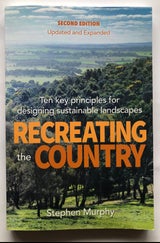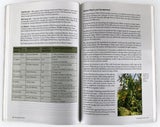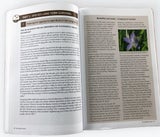Recreating the Country - Ten key principles for designing sustainable landscapes. Second edition.
Add $7 for postage
‘Recreating the Country is about hope and optimism. It is easy to read from cover to cover or it can be opened randomly to discover entertaining stories about nature and ecology.’
Bring wildlife back to your property while enhancing your income with plantations that last for centuries. This book puts into plain English modern scientific research, measured against 35 years of practical revegetation experience.
An easy-to-read designer's guide that will give landholders all they need to put trees back onto rural and urban landscapes in an environmentally and economically sustainable way.
At the heart of Recreating the Country are ten design principles, observed from nature. Integrated with other forms of income-generating revegetation like agroforestry, biorich plantations enrich biodiversity beyond our lifetimes into perpetuity.
Recently updated and expanded, this edition builds on the sustainable biorich design system first published in 2009 by author and ecologist Stephen Murphy.
The second edition includes three new chapters;
- Biodiversity and profit = biorich. What and how to plant to provide resources and income.
- Landscape corridors and connectivity - how to make these work across Australia.
- Six case studies of properties that have applied the design system over the past twelve years and the many benefits that they are seeing.
The original chapters have been fully updated to reflect new developments in revegetation theory and practice.
Fully illustrated in colour, this practical designer's guide would be an asset to any personal library.
A SIGNIFICANT DISCOUNT IS AVAILABLE TO LANDCARE GROUPS FOR THE PURCHASE OF 3 OR MORE BOOKS
For a quote please email: [email protected]
'Stephen Murphy’s philosophy and key principles for revegetation expand the potential of tree planting approaches and technologies. They open new ways of thinking about the kind of rural and urban landscapes that we need to create.'
Chapter by chapter, what you will discover:
Chapter 1 reviews past revegetation work and explains its shortcomings
Chapter 2 details the sustainable design system, the supporting scientific research and the valuable attributes of well-designed natural systems
Chapter 3 provides six case studies of people who have used ‘biorich’ design and how it fits their unique applications - an award winning winery, a boutique dairy, a grazier, a biodynamic farmer, an engineer and a 'biorich' demonstration property.
Chapter 4 gives practical examples of how the design system can incorporate productive plants to create income while not decreasing biodiversity
Chapter 5 describes how to incorporate farm forestry and improve biodiversity across rural landscapes
Chapter 6 looks at the role of paddock trees, the importance of providing landscape connections, re-establishing corridors and biolinks. It discusses community grass-roots methods that get results
Chapter 7 discusses revegetation on heavy volcanic soils, saline soils and lime rich/alkaline soils, and includes simple soil tests and lists of suitable plant species
Chapter 8 provides a practical rundown of the four establishment techniques used in revegetation projects - natural regeneration, direct seeding, planting tubestock and rewilding
Chapter 9 explains how plantations/remnants can be managed to enhance their biodiversity through the use of fire, grazing and tree thinning. Control of pest plants and animals is also discussed.
'Writing with passion, commitment and insight, Stephen Murphy emphasises the need to mimic nature and that working with nature requires a long-term perspective. It’s an important reminder that the actions we take today will shape the country that future generations will inherit.’
Andrew Bennett, Emeritus professor in Ecology, La Trobe University
'The sustainable biorich model is a way of ‘breaking down the fence’ between farmers and foresters.’
Geraint Richards, Head Forester for King Charles III
'This is a beautiful book, which shines with the optimism and determination of the rural community, bearing witness that we can do more (individually and collectively) to recreate the country that we want.'
Richard Loyn, Ecologist and adjunct professor, La Trobe University








